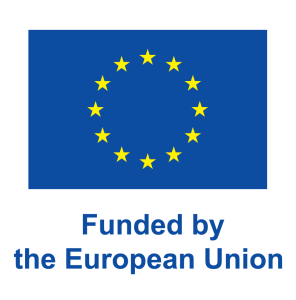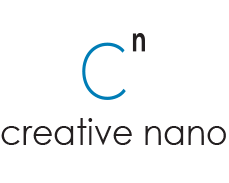
These projects have received funding from the European Union’s Horizon EUROPE research and innovation programme.
DIAGONAL: Development and scaled Implementation of safe by design tools and guidelines for multicomponent nanomaterials and High Aspect Ratio Nanoparticles
DIAGONAL aims to bring new methodologies to guarantee long-term nanosafety.
Sustain-a-Print (SaP): Sustainable materials and process for green printed electronics - Call: HORIZON-CL4-2021-DIGITAL-EMERGING-01, GA Number 101070556
SaP aims to replace fossil-based materials used for printed electronics (PE) production by using recycled, bio-based, and biodegradable alternatives.
REDONDO: REversibly Designed crOss liNkeD pOlymers - Call: HORIZON_HORIZON-CL4-2021-RESILIENCE-01-11, GA Number 101058449
REDONDO will develop reversibly cross-linked polyethylene (rPEX), rendering the up-to-date non-recyclable PEX a recyclable-by-design innovative polymer.
MOZART: METAL MATRIX NANO-COMPOSITE COATINGS UTILIZATION AS ALTERNATIVE TO HARD CHROMIUM - Call: HORIZON-CL4-2021-RESILIENCE-01-12, GA Number 101058450
MOZART proposes sustainable coating solutions for replacement of hard chromium in specific applications based on nano-composite electroplating processes.
FREEME: Toxic FREE MEtallization process for plastic surfaces - Call: HORIZON-CL4-2021-RESILIENCE-01-12, GA Number 101058699
FreeMe aims to eliminate the use of hexavalent chromium (Cr6+) and palladium (Pd) from the Plating on Plastics(PoP) process, based on REACH compliant chemicals, avoiding toxic compounds and ensuring long-term sustainability.
The SAFARI project is leading the way in the development of new materials. Our aim is to explore the possibilities of two-dimensional materials by means of inventive research and development This effort seeks to enable different kinds of end uses, such as conductive ink, EMI shielding, and biosensors.
![]()
These projects have received funding from the European Union’s Horizon 2020 research and innovation programme.
BIOMAC - European Sustainable BIObased nanoMAterials Community - Call: H2020- NMBP-04-2020, GA Number 952941
BIOMAC intends to build a sustainable OITB consisting of 17 Pilot Plants and supported by various technical and non-technical services for the upscaling of new bio-based materials concepts.
Cnano will provide its Pilot Line related to the ultrasound-assisted treatment of lignocellulosic biomass to produce nano-lignin particles.
3DPlate - Fabrication of metallic objects through electroplating on 3D printed parts - RESEARCH - CREATE - INNOVATE project code: Τ2EDK-02155

The 3DPlate project’s scientific and technological objectives focus on the design, printing, and finally electroplating, of a wide range of 3D structures and complex geometries, based on client’s desire (customized objects). Further objective is to set up and operate a prototype vertical pilot line aiming to fabricate custom 3D-printed metallic-coated objects.
Cnano will advance its knowledge on the utilization of appropriate design software, on 3D printing technologies, as well as on plating on plastics processes.
SbD4Nano - Computing infrastructure for the definition, performance testing and implementation of safe-by-design approaches in nanotechnology supply chains - Call: H2020 - NMBP-15-2019, GA Number 862195
The objective of the Safe-by-Design for Nano (SbD4Nano) project is to create a novel e-infrastructure for the definition, performance testing, and implementation of Safe-by-Design (SbD) approaches in the nanotechnology supply chains, in order to minimize the risks to human and environmental health during the engineering of NEPs.
The e-infrastructure will be applied to re-design and improve the semi-industrial paint formulation reactor regarding nanomaterials safety issues. Cnano will also contribute to the data and SbD resources analysis, as well as to define system requirements for materials.
EMERGE – Evaluation, control and Mitigation of the EnviRonmental impacts of shippinG Emissions – GA Number 874990
The EMERGE project aims at quantifying and evaluating the effects of potential emission reduction solutions for shipping in Europe and developing effective strategies and measures to reduce the environmental impacts of shipping.
NanoPAT - Process Analytical Technologies for Industrial Nanoparticle Production - Call: H2020-NMBP-08-2019, GA Number 862583
The EU-funded NanoPAT project plans to use three new real-time analytical tools which will overcome problems and limitations of conventional characterization technologies. The new process analytical technologies (PATs) are Photon Density Wave spectroscopy (PDW), Optofluidic Force Induction (OF2i), and Turbidity Spectrometry (TUS). The innovative technologies will be combined with new data analysis methods to provide, for the first time, real-time analysis of particles on the nanometer scale with sub-minute temporal resolution.
Cnano’s role in NanoPAT involves the provision of its electroplating pilot line and its laboratory facilities for the design and implementation of two newly developed monitoring systems (OF2i & TUS) which will be adjusted to the pilot line, aiming to monitor the nanoparticle suspension (particles size and concentration) within the electrolyte and its behavior during the production process (TRL 6).
SABYDOMA - Safety BY Design Of nanoMaterials - From Lab Manufacture to Governance and Communication: Progressing Up the TRL Ladder – Call: H2020-NMBP-15-2019, GA Number 862296
SABYDOMA addresses developments in the safety by design (SbD) paradigm by examining four industrial case studies in detail where the Technology Readiness Levels (TRLs) will advance from 4 to 6.
Cnano will redesign and modify their pilot line based on SbD principles developed in the project, in order to include a reflow system and incorporate high through-put testing. A new SbD concept will be developed for the electroplating of nano-enabled composite coatings, with Ni-P/SiC and/or TiO2 nanomaterials.
PureNano - A purification/regeneration process of spent plating baths base on functionalized magnetic nanoparticles. - Call: H2020-SC5-01-2018, GA Number 821431
PureNano project proposes an innovative, low cost, sustainable method for purification of plating baths which will lead to a significant life extension .As a result, decrease of operation expenditures of plating shops, decrease of environmental risks from transportation of spent baths, and increase of process efficiency and products quality are expected. It is based on the treatment of plating baths with functionalized magnetic nanoparticles (MNPs), that can absorb in their surface the contaminants and chemical species that are accumulated.
Cnano will provide specifications of their plating process and set end user requirements on industrial baths and their chemistry since this is in direct relation to the used functionalized MNPs. Cnano will also provide their Pilot scale facilities in order to make a market-based evaluation of the purification process in real plating baths. In addition, the company will work on the production of conceptual and detailed sets of engineering documents, feedbacking modelling, design, and manufacturing tasks.
LightCoce - Building an Ecosystem for the up-scaling of lightweight multi-functional concrete and ceramic materials and structures-Call: H2020-NMBP-01-2018, GA Number 814632
LightCoce project aims in offering an open-access Ecosystem for upscaling and testing multifunctional lightweight concrete and ceramic materials through 5 upgraded Pilot Lines (PLs) (targeting Concrete, Conventional and Advanced Ceramics), as well as characterization facilities, process modelling, quality assurance and monitoring, and standardisation, safety and innovation management services that will be accessible to the interested customers at fair conditions and cost.
Creative Nano is one of the end-users of the ecosystem bringing a test case in the field of lightweight concrete, in collaboration with Titan Cement (GR) and NTUA (GR). Cano will develop a stabilized nanometakaolin dispersion, which will enhance the mechanical properties of concrete.
SPRINT: Ultra-versatile Structural PRINTing of amorphous and tuned crystalline matter on multiple substrates, GA Number 801464
Thin film deposition methods for the production of devices e.g photovoltaic cells, LEDs, micro/nano-sensors are adopted from the industry. The production process parameters are important for the performance and function of these devices. Basically, elevated temperatures and vacuum conditions are necessary for the fabrication. Therefore, limitation in capacity and cost are restraining the development of new innovative materials. SPRINT will develop a universal deposition technology of amorphous and tuned crystalline matter on various substrates at lower cost and higher deposition rates, by combination of the existing technologies and going beyond the state of the art in advanced materials development.
SOLUTION - Solid lubrication for emerging engineering applications – Call: Marie Curie Innovation Training Networks 2016, GA Number 721642
SOLUTION Project combines theoretical approaches represented by advanced nanoscale simulations, laboratory design and fabrication of novel solid lubricants supported by simulations, and the up-scaling of promising solutions and their application in selected emerging engineering applications.
Cnano responsibility it to develop and characterize an engineering electrodeposited composite coating based on Ni or Ni-P matrix reinforced by 2D nanoparticles, presenting low friction and high wear and corrosion resistance.
GREEN INSTRUCT – Green Integrated Structural Elements for Retrofitting and New Construction of Buildings – Call: H2020-EEB-2016, GA Number 723825
The Green INSTRUCT project aims to develop a prefabricated modular structural building block that is superior to conventional precast reinforced concrete panels by virtue of its reduced weight, improved acoustic and thermal performance and multiple functionalities. The Green INSTRUCT block consists of over 70% of CDW in weight.
Cnano has a major role in the project by developing and delivering a photocatalytic paint active indoors for application in the precast blocks for building reinforcement. Cnano is also responsible for the evaluation of the photocatalytic activity of the powders and paints developed, utilizing is fully equipped laboratory.
NanoBAT – Enhanced brown adipose tissue activity using nanotechnology approaches – Call: H2020-MSCA-RISE-2015, GA Number 861962
The nanoBAT project aims to create an effective intersectoral co-operation between academia institutions and SMEs to advance the concept of nanostructured delivery-L-menthol system for brown adipose tissue activation. nanoBAT will put together knowledge, research expertise and resources from two large academic participants with business, market and commercialisation experience from three small-medium enterprises (SMEs)
Cnano’s main role is to apply innovation management methodologies for the developed technologies and thus their faster adoption by the market
FineSol - Assembly of miniaturised PCBs by using low cost hyper-fine solder powders – Call:H2020-FoF-2015, GA Number 680718
The FineSol project targets the production of hyper fined solder powders of type 8-9 (particles size 1-10μm) and finer interconnects/higher interconnect density thereby increasing functionality per unit size and leading to miniaturisation of PCBs. Thus, the project targets significant saving of raw materials used by reduction in electronics size and weight, and energy consumption by reduction in PCB soldering temperatures and dwell time leading to decrease of cost.
PROCETS - PROtective composite Coatings via Electrodeposition and Thermal Spraying – Call: H2020-NMP-PILOTS-2015, GA Number 686135
PROCETS main target is to deliver protective coatings covering a wide range of applications such as automotive, aerospace, metal-working, oil and gas and cutting tools industries via thermal spray and electroplating methods by utilizing more environmental friendly materials, compared to the currently used.
Cnano has a major role in the project targeting in delivering a sustainable electroplating method for applying hard protective coating, alternative to hard chromium, in applications such as rods for shock absorbers in collaboration with Tenneco and in cutting links of chain saws for Husqvarna. All specimens are coated in the pilot line of the company.


